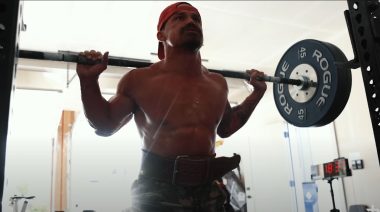Most sports are all about power. It doesn’t matter if you’re strong if you’re slower than Christmas. It doesn’t matter if you’re fast if a stiff wind can knock you over. You have to be both strong and fast, which means you need power. So what’s the best way to train to achieve that elusive mix? A recent article in the Strength and Conditioning Journal examined just that.
In the context of weight training, the simple answer is, “Use workout loads that elicit maximal power output.” This is typically about 50-70% of 1RM. But when put to the test in actual sports, this theory doesn’t hold up. Producing power under loaded conditions (e.g. a rugby scrum, an American football block, or a wrestling hold) requires more absolute strength than is developed by using moderate loads.
Researchers determined the best method for sports performance is a mixed approach. Loads of 30-70% 1RM are used to develop power, and loads of 75% and greater are used for absolute strength development. The study authors even suggested that warmup sets can be used for power development while preparing for heavier loads that focus on strength development. To fully take advantage, athletes must lift the submaximal loads explosively. This tactic is reminiscent of the Dynamic Effort Method popularized by Louie Simmons at Westside Barbell, although Westside devotes an entire training session to light loads lifted explosively.
Another successful method described in the article is employing myriad exercises that develop all necessary athletic qualities. For example, jump squats, power cleans, and back squats could be used in a workout to address the entire spectrum of load and speed. Finally, another approach is to use the clean and the snatch, which are shown to deliver superior performance gains across the spectrum.
My conclusion: I may be biased, but the training methods described by the article sound a lot like CrossFit. In fact, I suspect the authors knew they were flirting with recommending CrossFit as a legitimate strength and conditioning program because they included this statement at the end, “Regardless of the methods used for power development, it is essential that they are logically incorporated into a periodized training plan.” This reminds everyone of the most consistent criticism of CrossFit, or rather, a criticism of CrossFit when executed poorly. No matter the label, mixed method training is consistently getting more respect as a training program for sports performance.
References:
1. G. Gregory Haff and Sophia Nimphius. Training Principles for Power. Strength & Conditioning Journal: December 2012. Vol. 34. Issue 6. p 2–12. doi: 10.1519/SSC.0b013e31826db467
Photo courtesy of Shutterstock.






